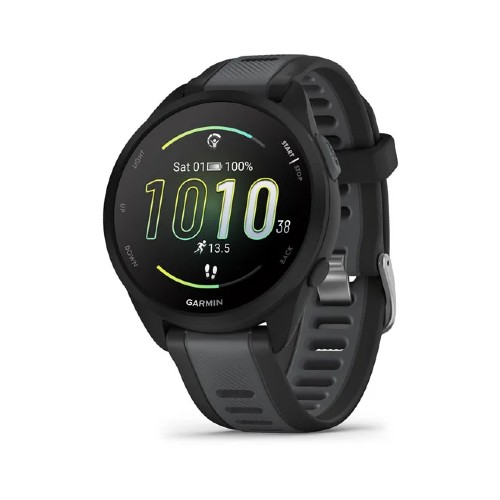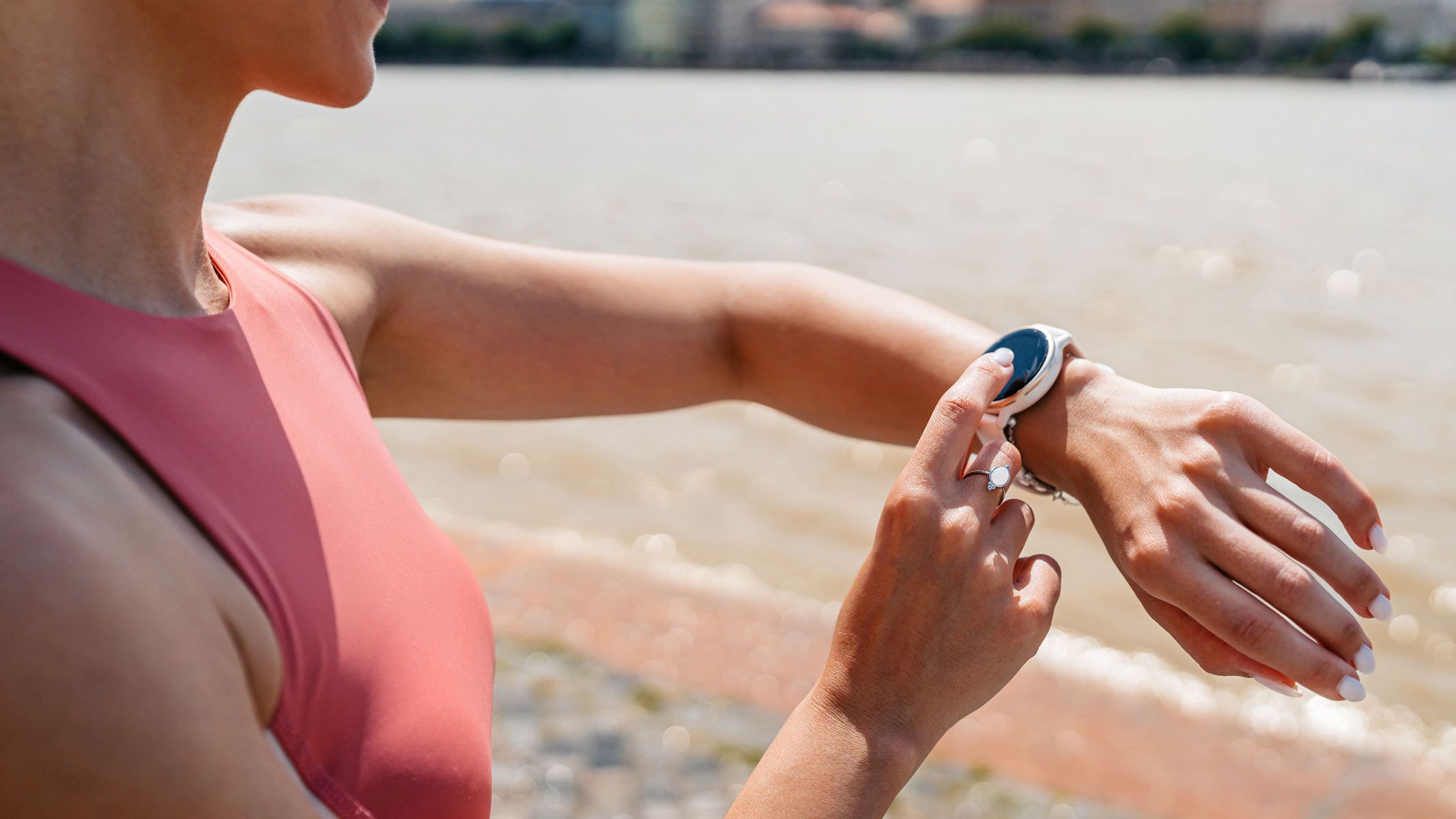Picture this: You excitedly buy a new smartwatch. At first, you can’t get enough of it — you wear it day and night, track your every move and check all fitness reports. Fitness tracking becomes a part of your day-to-day routine. However, this newfound enthusiasm does not last long, and within months or even weeks, you end up abandoning your smartwatch or smart ring altogether. Sounds familiar? If it does, rest assured that you are not alone. Evidence suggests that many people struggle with long-term fitness tracking, regardless of whether they use a premium Garmin watch or a budget-friendly fitness band.
For example, a 2016 Gartner survey found that as many as one-third of smartwatch owners in the US have abandoned their devices. According to a more recent 2024 LocalCircles survey, only a fifth of users who purchased their fitness trackers were still using them regularly, and a staggering 79% of respondents reported having at least one unused device at home. What is even more interesting is how quickly we seem to cast them away. For example, in a small 2017 experimental study, half of the participants who were asked to record their activity stopped using fitness trackers within the first two weeks of the experiment.
Fitness tracking is an acquired behavior, and, like all behaviors that are not innate to our nature, it is created and reinforced through a process of repetition, feedback, and reward. This complex habit loop can be easily interrupted by a myriad of different factors. “Fitness tracking is about the interaction between a person, technology, and the environment in which that person is living and working. All three of those aspects will affect their decision to use fitness trackers continuously,” Judy Van Raalte, a professor emerita of sport psychology at Springfield College, Massachusetts, told Live Science.
That said, evidence also suggests that some factors may have a greater impact on our long-term use of fitness trackers than others. Here are four common reasons why many of us abandon fitness trackers — according to science.
Reason 1: You have a tracker, but no clear fitness goals
Even the fanciest smartwatch will not last long if you do not have a well-defined idea as to why you want to use it in the first place. When you set specific, measurable goals — for example, 10,000 steps a day or 150 minutes of moderate-intensity exercise a week — your fitness tracker becomes a valuable tool for monitoring and improving these metrics over time, rather than just a gadget for keeping up to date with your stats. While it may sound obvious, many people buy fitness trackers primarily to help motivate themselves to exercise. However, this approach rarely works if they have no internal drive to begin with.
Live Science recommends

Garmin Connect is a popular mobile app that tracks your fitness metrics and allows you to share your data with friends, family and other users. It is compatible with many of the best Garmin watches, including our favourite Garmin Forerunner 165 — an excellent beginner-friendly sports watch, and one of the handful of fitness trackers that we awarded a five-star rating.
“Fitness trackers get abandoned due to a general lack of exercise motivation. People, and sedentary individuals in particular, do not tend to switch to an active lifestyle overnight,” Selen Razon, an associate professor of exercise science at West Chester University, Pennsylvania, told Live Science. “It is seeing progress or a sense of mastery over desired outcomes that makes people stick with the tracking tools,” Razon said.
This view is widely shared among fitness professionals. “There is no initial warrant for a fitness tracker to be proactive in what it is doing unless its user genuinely wants to make a change to their lifestyle,” Lewis Paris, a London-based certified personal trainer and the director of Lewis Paris Fitness, a corporate wellness company, told Live Science. People who are not as goal-oriented, on the other hand, are less likely to stick to fitness tracking, Paris said.
Potential solution: First, focus on the ‘why’, not ‘how’. Think of the reasons why you want to improve your fitness and what you want to achieve with your fitness tracker. Then, write down one to three specific and measurable goals that you can easily monitor with your wearable (for example, ‘eight hours of sleep a day’ rather than ‘better sleep’, or ‘6,000 steps a day’ instead of ‘move more’).
Reason 2: You have clear goals, but not the right device to measure them
When buying a fitness tracker, it is easy to get swayed by popular trends or peer pressure. However, what worked wonders for your friends or professional product testers may not necessarily have the same effect on you. Fitness trackers come in a mind-boggling variety of forms, and half of the success lies in picking a wearable that fully reflects your needs, preferences, and fitness abilities. At the end of the day, the fitness tracker that you end up using the most is the one that brings the most value into your daily life.
Live Science recommends
The Apple Watch Series 8 and the Samsung Galaxy Watch 6 are our top choices for smartwatch interactivity, and two of the fitness trackers that we enjoyed using the most. True, they may not be as sleek and advanced as their most recent counterparts, but they offer the same wide range of gamified apps at a more affordable price.
Functionality of the device is a key factor here. “For example, users of the Whoop band will likely have different fitness goals than users of the Oura ring or a Garmin smartwatch, and that is because the Whoop band is centered on precise measurements of exercise performance, while the Oura ring focuses on recovery and sleep metrics,” Paris said. If your fitness tracker is not measuring stats in a way that is relevant to your needs and goals, you will not have the incentive to stick with that wearable long-term.
Device quality is another important factor here. Studies have shown that poor data accuracy and reliability may be among the primary reasons users abandon fitness trackers, according to a 2022 systematic review published in the journal Behaviour & Information Technology. This factor is particularly important for athletes and advanced exercisers. “For very avid users who are knowledgeable about their fitness, the inaccuracy of fitness trackers can be frustrating, especially when they share the results with others,” Van Raalte said.
Moreover, it is not just about how the data is collected, but also how it is presented to the user. “Some people just do not work well with raw data. They do not understand it or do not see the benefit of knowing such things,” Paris said. “Types of wearable tech that provide clear, structured feedback on what is working well may be more effective,” he explained.
How your fitness tracker motivates you is another important factor to consider. “For instance, some may really enjoy the constant reminders to exercise, or competing with others through their tracker use, while for others these [features] can be turn-offs,” Razon said.
Potential solution: Think carefully about what you would want your ideal device to be like, then spend some time researching the products that fit your criteria the most. Look at various product reviews and online user testimonials for practical insights, but also bear in mind that their experiences with the product may not be exactly the same as yours.
Reason 3: You do not share fitness stats with others
Humans are social creatures, and this also applies to fitness tracking. Social comparison (a natural human tendency to evaluate our own abilities and opinions by comparing ourselves to others) can be a powerful driving force behind long-term fitness tracking, according to the review mentioned before — and our experts wholeheartedly agree. “When people are able to compete with other users, or if they know that their friends and family can track their achievements, they may be more motivated to use a fitness tracker in the long term,” Razon said.
The allure of sharing your fitness stats may also partially explain why advanced fitness trackers appear to have more long-term users than the more basic, budget-friendly wearables, Van Raalte said. “It is not necessarily because they come with better technology or a nicer display, but because premium smartwatches tend to enable more social interaction, such as engaging with other people on dedicated forums or posting their runs or rides or fitness on Strava and other apps,” she said.
Potential solution: Choose a fitness tracker that allows you to share your fitness metrics with friends, family or dedicated communities online. Alternatively, find an ‘accountability partner’ — someone who can support you in staying committed to your fitness goals through regular check-ins, encouragement and honest feedback.
Reason 4. Your fitness tracker is not fun to use
What comes to your mind when you say ‘fitness tracking’? We can bet a top dollar that is not ‘fun’. However, perceived enjoyment can be a significant factor in determining whether or not we stick to our fitness trackers in the long term, according to the review. But how can you make fitness tracking fun, exactly? Two words: gamification and interactivity, according to a 2021 study published in the journal SAGE Open.
Gamification is a term used for incorporating game elements, such as point scoring and competition with others, into non-game environments. In the case of fitness tracking, it can mean taking part in virtual challenges and receiving awards for achieving specific fitness goals. Interactivity, on the other hand, is about how fitness trackers engage your attention to enhance your user experience. For example, when our wearables suggest the next exercise plan or modify their advice based on your performance. “Features that remind or nudge people to move, as well as the ones that give them positive reinforcements based on desired behaviors — earning badges based on step count, for example — promote continuous use of fitness trackers,” Razon said.
Potential solution: Choose a fitness tracker that offers fun, engaging features and/or access to third-party fitness platforms, or one that can help you create your own exercise routine (with the help of, for example, an AI-driven coach).
This article is for informational purposes only and is not meant to offer medical advice.
